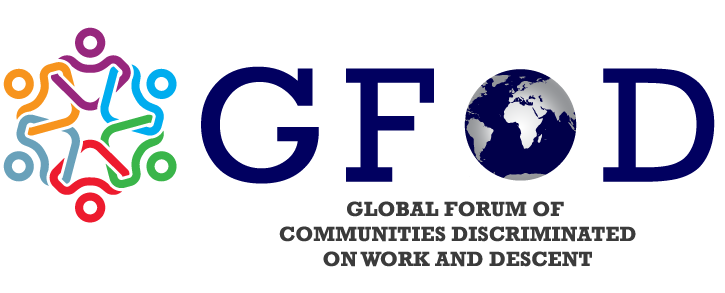UNICEF publishes major report on Roma children and women, gives crucial recommendations
UNICEF has published a summary of findings from four MICS surveys in Roma settlements in Kosovo (UNSCR 1244), Montenegro, North Macedonia and Serbia, highlighting several aspects regarding Roma Children and Women.
Governments, international organisations, and civil society have increasingly recognized the importance of protecting and advancing the rights of Roma individuals, UNICEF pointed, leading to the implementation of various laws, plans, and strategies to enhance their well-being.
The Roma community constitutes the largest ethnic minority group in Europe, with an estimated 10 to 12 million Roma living across the continent, approximately 6 million of whom are citizens or residents of the European Union (EU).
Improving the lives of Roma requires a human rights-based approach. All countries in Europe and Central Asia have formally committed to protecting and promoting the rights of all children and women. Prioritising the well-being of Roma children and women within the Roma community is essential for promoting social justice, human rights, and inclusive development.
Addressing their specific challenges, empowering them, and providing equal opportunities will lead to a more equitable and inclusive society for all. It is crucial for governments, international organisations, and civil society to intensify collaboration and implement targeted interventions to uplift the Roma communities and ensure they benefit from universal services on an equal basis with the rest of the population. By doing so, Europe can move closer to achieving its goals of equality, inclusion, justice, and participation for all its citizens, regardless of their ethnic backgrounds.
Recommendations
Focusing on the well-being of Roma children and women within the Roma community is vital for promoting human rights and inclusive development. Empowering them and providing equal opportunities will lead to a more equitable and inclusive society for all. However, addressing the disparities and ensuring access to universal services will require further efforts and collaborative actions from governments, international organisations, and civil society to address the complexity of social and economic factors that are perpetuating the cycle of disadvantage for Roma.
Incorporation of Roma Mediators
UNICEF strongly advocates the incorporation of Roma mediators into healthcare, social, and educational systems to enhance the effectiveness of these services, particularly for those without health insurance or personal documentation, including Roma mothers in need of antenatal and delivery care. Relevant stakeholders should be supported to engage and facilitate dialogues with Roma community leaders and activists to gain their trust and support. Existing home visiting platforms should be enhanced to address the equity gaps in health, development, and well-being of Roma children through advocacy, policy advice, and technical assistance.
Comprehensive Education Strategies
UNICEF recommends the adoption of a comprehensive strategy that engages community leaders, parents/caregivers, and positive role models to amplify awareness about the transformative potential of education in alleviating poverty and dependency. The proclamation of role models and the promotion of positive deviance within communities can have a ripple effect in reducing school dropouts, preventing child marriages, and enhancing social cohesion in the targeted countries.
Additionally, ensuring equitable access for Roma children to high-quality and inclusive early childhood education is essential. This can be achieved by expanding educational infrastructure, promoting inclusive practices, and removing financial, attitudinal, and other barriers that hinder Roma participation in early childhood education and care (ECEC). Expanding support for parenting of young children to foster responsive caregiving and early learning at home is also crucial.
Interagency Synergy for Child Protection
Establishing a robust interagency synergy between child protection and other mechanisms such as health, educational, and social protection mechanisms is imperative, at both national and subnational levels. By harmonising the efforts of child protection and social protection agencies, we can create a more comprehensive safety net to safeguard at-risk children effectively. This collaboration ensures a holistic approach that addresses not only immediate child welfare concerns but also broader socioeconomic factors affecting vulnerable children and families. This integrated approach maximises the potential for positive outcomes and reinforces the commitment to ensure the well-being and protection of all children, irrespective of their circumstances.
Policy Reforms for Social Justice
UNICEF said stakeholders with a vested interest in promoting social justice should give due consideration to the necessity of enacting policy changes and reforms, as appropriate, to break down barriers and facilitate equitable access to social protection services, with a special focus on historically marginalised communities, such as the Roma. It is imperative to champion policies that explicitly prioritise the needs of socially vulnerable groups, including children. The concerted effort in policy advocacy and reform is indispensable in addressing deep-seated systemic inequalities, thereby guaranteeing that social protection programs are not only accessible but also efficaciously serve the needs and enhance the well-being of the Roma community. Inclusivity within policies stands as an indispensable safeguard for upholding the rights and enhancing the overall quality of life for these vulnerable populations.
Inclusion of Roma Youth in Decision-Making
Governments should recognize and act upon the importance of including Roma youth voices in decision-making processes by integrating them into youth councils and other platforms, ensuring a more diverse and representative governance.
By focusing on these comprehensive strategies, stakeholders can work towards breaking the cycle of disadvantage for the Roma community, ensuring that Roma children and women, in particular, are given the opportunities they need to thrive. This collaborative effort is crucial for fostering an inclusive, just, and equitable society for all.


